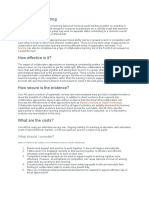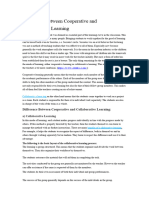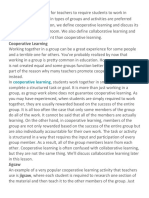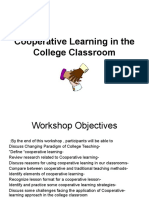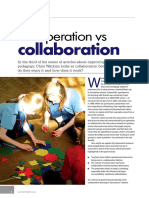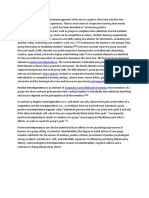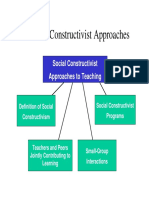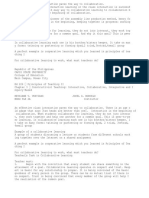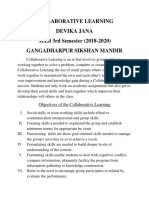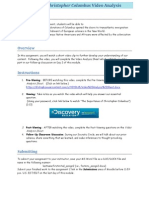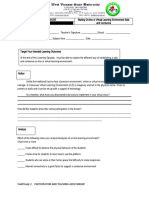0% found this document useful (0 votes)
117 views10 pagesCollaborative Learning
The document defines and compares collaborative learning and cooperative learning. Collaborative learning involves students working together as a team to explore a topic, with the teacher acting as a facilitator. Cooperative learning involves students working in small groups on structured tasks, where students are individually accountable and the group is evaluated as a whole. Both approaches emphasize active participation over lectures, student responsibility, facilitator teachers, and team-building skills. The document discusses the benefits of these approaches for students and adapting teaching methods to be more collaborative.
Uploaded by
mwansashapi07Copyright
© © All Rights Reserved
We take content rights seriously. If you suspect this is your content, claim it here.
Available Formats
Download as DOCX, PDF, TXT or read online on Scribd
0% found this document useful (0 votes)
117 views10 pagesCollaborative Learning
The document defines and compares collaborative learning and cooperative learning. Collaborative learning involves students working together as a team to explore a topic, with the teacher acting as a facilitator. Cooperative learning involves students working in small groups on structured tasks, where students are individually accountable and the group is evaluated as a whole. Both approaches emphasize active participation over lectures, student responsibility, facilitator teachers, and team-building skills. The document discusses the benefits of these approaches for students and adapting teaching methods to be more collaborative.
Uploaded by
mwansashapi07Copyright
© © All Rights Reserved
We take content rights seriously. If you suspect this is your content, claim it here.
Available Formats
Download as DOCX, PDF, TXT or read online on Scribd
/ 10

